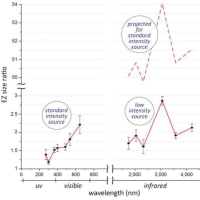2.アメリカ: コロナワクチン12月に死者13人以上、深刻な「健康影響イベント」2.3%、インフルエンザワクチンの80倍の重度のアレルギー
Serious allergic reactions重篤なアレルギー反応
Critics familiar with VAERS’ shortcomings — and the ways in which officials can manipulate its data — bluntly condemn VAERS as “nothing more than window dressing, and a part of U.S. authorities’ systematic effort to reassure/deceive us about vaccine safety.”
VAERSの欠点、および当局がそのデータを操作する方法に精通している批評家は、VAERSを「窓の飾りにすぎず、米国当局のワクチンの安全性について私たちを安心させ/欺くための当局の体系的な取り組みの一部である」と率直に非難します。
As an example of the “effort to reassure,” one need look no further than the Jan. 6 CDC news release about post-vaccination anaphylaxis and non-anaphylaxis allergic reactions.
「安心への努力」の例として、ワクチン接種後のアナフィラキシーと非アナフィラキシーのアレルギー反応に関する1月6日のCDCニュースリリースを見る必要があります。
In this report, the CDC’s tally of the hundreds of VAERS reports received per day during the first 10 days of the Pfizer vaccine rollout totaled 4,393 adverse events from December 14 to 23 — including 175 incidents flagged by CDC “for further review as possible cases of severe allergic reactions, including anaphylaxis, based on descriptions of signs and symptoms.”
このレポートでは、ファイザーワクチンの展開の最初の10日間に1日あたりに受信した数百のVAERSレポートのCDCの集計は、12月14日から23日までの合計4,393件の有害事象でした。「兆候と症状の説明に基づいて、アナフィラキシーを含む重度のアレルギー反応の可能性のある症例としてさらに検討するために」CDCによってフラグが立てられた175件の事件を含みます。
Following its review, the CDC chose to include only 21 cases, excluding 154 cases either because they did not meet narrow criteria defined by the Brighton Collaboration (a global group that publishes “standardized case definitions” for countable adverse events); or because symptom onset occurred “later than the day after vaccination”; or because CDC judged the events to be “nonallergic” despite signs and symptoms to the contrary.
審査の結果、CDCは、ブライトンコラボレーション(カウント可能な有害事象の「標準化されたケース定義」を公開するグローバルグループ)によって定義された狭い基準を満たしていないため、または、症状の発症が「ワクチン接種日より遅く」発生したため。または、CDCが、反対の兆候や症状にもかかわらず、イベントを「非アレルギー性」と判断したため、154ケースを除いて、21ケースのみを含めることを選択しました。
Based on the 21 cases, the public health agency then produced an estimate of 11.1 cases of anaphylaxis per million vaccine doses, whereas including all 175 events reported as severe allergic reactions would have yielded a rate of 92.4 cases per million doses.
21例に基づいて、公衆衛生局は100万回のワクチン投与あたり11.1例のアナフィラキシーの推定値を作成しましたが、重度のアレルギー反応として報告された175件すべてを含めると、100万回の投与あたり92.4例の割合になります。
Even so, the CDC’s conservative estimate of the anaphylaxis rate for experimental COVID-19 mRNA vaccines is roughly 10 times greater than for flu shots, including in individuals with no prior history of allergic reactions.
それでも、実験的なCOVID-19 mRNAワクチンのアナフィラキシー率のCDCの控えめな推定値は、アレルギー反応の既往歴のない個人を含め、インフルエンザの発作の約10倍です。
(訳注: CDCが除いたものも全て含めると、インフルエンザワクチンの約80倍の重度のアレルギー反応の発生率)
News reports have added to the frightening picture of post-COVID-19 allergic reactions that is emerging.
ニュースレポートは、出現しているCOVID-19後のアレルギー反応の恐ろしい状況に追加されました。
These include the “hundreds” of Israelis describing “severe anaphylactic shock,” other allergic symptoms such as tongue and throat swelling, tingling sensations, dizziness and weakness; the two health workers in the UK who suffered “anaphylactoid reactions” on the first day of the Pfizer vaccine rollout; the two hospital workers in Alaska who experienced allergic symptoms — a serious anaphylactic reaction in one case and “eye puffiness, light headedness and scratchy throat” in the second case — within 10 minutes of getting the Pfizer jab; and the “mild to moderate” side effects from the Pfizer injection, including pain and dizziness, reported by four Bulgarians.
これらには、「重度のアナフィラキシーショック」を説明するイスラエル人の「数百人」、舌や喉の腫れ、チクチクする感覚、めまい、脱力などの他のアレルギー症状が含まれます。
ファイザーワクチンの展開初日に「アナフィラキシー様反応」を起こした英国の2人の医療従事者。
アレルギー症状を経験したアラスカの2人の病院労働者(1つのケースでは深刻なアナフィラキシー反応、2番目のケースでは「目の腫れ、軽い頭の痛み、喉のかゆみ」)はファイザージャブを入手してから10分以内。
4人のブルガリア人によって報告された、痛みやめまいを含むファイザー注射による「軽度から中等度」の副作用も含まれます。
Reactions have not been confined to allergic symptoms, however.
ただし、反応はアレルギー症状に限定されていません。
Additional descriptions of adverse events include:
有害事象の追加の説明は次のとおりです。
・A “rare, multisystem inflammatory syndrome,” including heart damage, developed by a 23-year-old male social worker in Israel 24 hours after receiving the Pfizer injection.
・ファイザー注射を受けてから24時間後にイスラエルの23歳の男性ソーシャルワーカーが発症した、心臓の損傷を含む「まれな多系統炎症症候群」。
・The seizures and encephalomyelitis (brain and spinal cord inflammation) experienced by 32-year-old Mexican internist Karla Cecilia Perez hours after getting the Pfizer shot.
・ファイザー注射を受けてから数時間後に32歳のメキシコ人インターニスト、カーラ・セシリア・ペレスが経験した発作と脳脊髄炎(脳と脊髄の炎症)。
・The Bell’s palsy developed by a U.S. nurse within three days of her injection. On YouTube, she warns Americans, “Do not take this vaccination,” saying “I would not wish this on my worst enemy.”
・彼女の注射から3日以内に米国の看護師が発症したベルの麻痺。彼女はYouTubeで、アメリカ人に「このワクチン接種を受けないでください」と警告し、「最悪の敵にこれを望まない」と述べています。
Adverse mRNA vaccine reactions — no picnic
有害なmRNAワクチン反応 - ピクニックではない
Setting the stage to “manage expectations,” The Atlantic told readers in mid-December that while COVID-19 injections have “a kick” and involve “more than the usual unpleasantness of getting a shot,” they are still “nowhere near as bad as COVID-19 itself.”
「期待を管理する」ための舞台を整えて、The Atlanticは12月中旬に読者に、COVID-19注射には「キック(蹴り)」があり、「注射を受けるという通常の不快感以上のもの」を伴うが、それでも「COVID-19自体ほど悪くはない」と語った。
Some of the individuals described above and others submitting reports to VAERS might beg to differ.
上に述べた個人の一部とVAERSにレポートを提出する他の個人は異なることを願うかもしれません。
For example, in a write-up accompanying one VAERS report (available through MedAlerts), a 36-year-old female who received the Pfizer vaccine on Dec. 17 was described as experiencing “disabling” light-headedness and dizziness 15 to 20 minutes post-vaccination, followed by an elevated heart rate and “really high” blood pressure.
たとえば、1つのVAERSレポート(MedAlertsから入手可能)に付随する記事では、12月17日にファイザーワクチンを投与された36歳の女性がおり、次のように説明されました: ワクチン接種後15〜20分で「無力化」の頭がおかしくなり、めまいがし、その後心拍数が上昇し、血圧が「非常に高く」なりました。
After several hours in a monitoring station, where health workers gave her Benadryl and “lots of water” along with measuring her blood pressure “every five minutes,” she spent another four hours undergoing “continual monitoring” in the emergency room, followed by “a few more hours” in the ER the following day and a recommendation to start taking blood pressure medication.
医療従事者がベナドリルと「大量の水」を与え、血圧を「5分ごと」に測定する監視ステーションで数時間過ごした後、彼女はさらに4時間、緊急治療室で「継続的な監視」を受け、続いて「翌日のERで「あと数時間」と血圧薬の服用を開始することを勧められた。
By Dec. 20, her blood pressure still had not normalized, and she had developed a bad headache.
12月20までに、彼女の血圧はまだ正常化しておらず、彼女はひどい頭痛を発症していました。
The health provider who submitted the report to VAERS on the woman’s behalf concluded that a causal association between Pfizer’s vaccine and the event could not be ruled out “based on a compatible temporal relation.”
女性に代わってVAERSに報告書を提出した医療提供者は、ファイザーのワクチンとイベントとの因果関係を「互換性のある時間的関係に基づいて」除外することはできないと結論付けました。
Among Pfizer vaccine recipients with reactions categorized in VAERS as “life-threatening,” there are many other disquieting write-ups, often concerning young women in their 30s:
VAERSで「生命を脅かす」と分類された反応を示すファイザーワクチンの接種者の中には、30代の若い女性に関する多くの不穏な記事があります。
・Female, age 31: “40 min after injection my throat and tongue started to feel weird and tight, pharmacy…gave me [Benadryl and Tylenol].
・女性、31歳:「注射の40分後、喉と舌が奇妙できつく感じ始めました。薬局…私に[ベナドリルとチレノール]をくれました。
At about 1 hr 45 min after injection my throat got to the point of so swollen and itchy I couldn’t swallow.
注射後約1時間45分で喉が腫れ、かゆくなり、飲み込めなくなりました。
I went to nearest emergency room….”
私は、最寄りの緊急治療室に行きました…。」
・Female, age 35: “5 minutes after getting the vaccine began itching that quickly developed into rash/hives to face, neck, chest, abdomen.
・女性、35歳:「ワクチン接種後5分でかゆみが始まり、顔、首、胸、腹部にすぐに発疹/蕁麻疹になりました。
At 20 minutes post vaccine developed severe leg weakness with lightheadedness, chest tightness, and [shortness of breath].
ワクチン接種後20分で、立ちくらみ、胸の張り、[息切れ]を伴う重度の脚の衰弱が発生しました。
22 minutes out collapsed to the floor unable to bear weight…and had severe cramping and tingling in legs, still unable to move them.
22分で床に倒れ、体重に耐えられなくなりました...そして足にひどい痙攣とうずきがありましたが、それでも足を動かすことができませんでした。
Was rushed to the ER….”
ERに急ぎました。
・Female, age 30: “Approximately 2 minutes after injection, felt flushed and tingly.
・女性、30歳:「注射後約2分で、顔を赤らめ、ピリピリと感じた。
This subsided, but developed a cough.
これは治まりましたが、咳が出ました。
Felt fine enough to leave the vaccination area after being monitored for 15 minutes.
15分間監視した後、ワクチン接種エリアを離れるのに十分なほど元気に感じました。
Cough continued, and developed a scratchy throat that eventually led to swelling of the throat at approximately 30-35 mins post administration.
咳が続き、ひっかき傷のある喉ができ、投与後約30〜35分で最終的に喉が腫れました。
Sought care in the ED, where I was tachycardic and hypertensive…. Discharged home, but symptoms returned around 2pm.
私が頻脈と高血圧であったEDでケアを求めました…。 退院して家に帰りましたが、午後2時頃に症状が再発しました。
Sought care in a different ED, where I remained hypertensive and tachycardic.”
違うEDで治療を求め、そこで高血圧と頻脈が続いていました。」
What’s next? 次は何か?
An objective analysis of the COVID-19 vaccine rollout necessarily raises serious questions about product safety and the assessment of risks versus benefits.
COVID-19ワクチンの展開を客観的に分析すると、必然的に製品の安全性とリスク対ベネフィットの評価について深刻な問題が発生します。
The VAERS reports submitted through December indicate that over half (53%) of those affected by mRNA vaccine reactions are 17-44 year-olds in the prime of life.
12月までに提出されたVAERSレポートによると、mRNAワクチン反応の影響を受けた人の半数以上(53%)は、人生の最盛期の17〜44歳です。
More than one in five (n=877) adverse events resulted in an emergency visit, 140 were rated “serious,” 100 led to hospitalization, 41 were “life-threatening” and 5 produced permanent disability.
5人に1人以上(n = 877)の有害事象が救急訪問をもたらし、140人が「深刻」と評価され、100人が入院に至り、41人が「生命を脅かす」、5人が永続的な障害を引き起こしました。
Supplementing VAERS, the CDC has been encouraging COVID-19 vaccine recipients to use a smartphone app called v-safe to “quickly tell CDC” about mRNA vaccine side effects.
CDCは、VAERSを補完するものとして、COVID-19ワクチンの接種者に、v-safeと呼ばれるスマートフォンアプリを使用して、mRNAワクチンの副作用について「CDCにすばやく伝える」ことを奨励しています。
On Dec. 19, v-safe tallies for the first five days of COVID-19 vaccination showed that among 215,362 vaccine recipients registered with v-safe, 5,052 individuals self-reported serious “health impact events” following their first dose of vaccine — events requiring care from a fellow health professional and rendering the person unable to work or perform normal daily activities.
12月19日、COVID-19ワクチン接種の最初の5日間のv-safe集計は、v-safeに登録された215,362人のワクチン接種者のうち、5,052人がワクチンの初回投与後に深刻な「健康影響イベント」を自己報告したことを示しました。仲間の医療専門家によるケアを必要とし、その人が仕事をしたり、通常の日常活動を行うことができなくなったりするイベントです。
This, too, is concerning, translating into a one-in-43 injury rate (2.3%) for the v-safe group.
これも懸念事項であり、v-safeグループの43人に1人の負傷率(2.3%)と解釈されます。
In the new year, many states are planning to aggressively scale up distribution of both the Pfizer vaccine and the even more reactogenic Moderna vaccine, including at drugstores, supermarkets, big-box stores, dental offices and temporary sites like stadiums and even Disneyland.
新年には、ドラッグストア、スーパーマーケット、大型店、歯科医院、スタジアムやディズニーランドなどの仮設サイトを含め、多くの州がファイザーワクチンとさらに反応性の高いモデルナワクチンの両方の配布を積極的に拡大することを計画しています。
This has prompted concerns among allergists, in particular, who question whether drive-thru sites and under-trained personnel will be able to recognize and handle the sudden adverse reactions that the two mRNA vaccines seem capable of eliciting — especially since both contain the notorious allergenic ingredient polyethylene glycol (PEG).
これは、特に、ドライブスルーサイトと十分な訓練を受けていない担当者が、2つのmRNAワクチンが誘発できると思われる突然の副作用を認識して処理できるかどうかを疑問視するアレルギー専門医の間で懸念を引き起こしました - 特に両方に悪名高いアレルギー誘発性成分ポリエチレングリコール(PEG)が含まれているため。
In the U.S., some allergists are recommending that consumers with known allergies be “proactive” and ask prospective vaccination venues “pointed questions” about their emergency training, equipment and ability “to respond swiftly if something goes wrong.”
米国では、一部のアレルギー専門医は、既知のアレルギーを持つ消費者は「前もって行動し」、緊急訓練、設備、および「問題が発生した場合に迅速に対応する」能力について、将来のワクチン接種場所に「指摘された質問」をすることを推奨しています。
A growing number of healthcare experts are going even further, with one Wyoming public health official describing the injections as “biological weapons of mass destruction,” and many others urging the public to “just say no” to experimental injections that health officials and the vaccine makers admit aren’t proven to prevent COVID or stop transmissibility, but could do long-lasting harm.
多くのヘルスケア専門家はさらに進んでおり、あるワイオミング州の公衆衛生当局は注射を「大量破壊の生物学的武器」と説明し、他の多くの人は実験的注射に「ただノーと言う」ように国民に促しています、保健当局とワクチンメーカーが認めていることは、COVIDを防止したり、伝染を停止したりすることは証明されていませんが、長期的な害を及ぼす可能性があります。
(以上)























